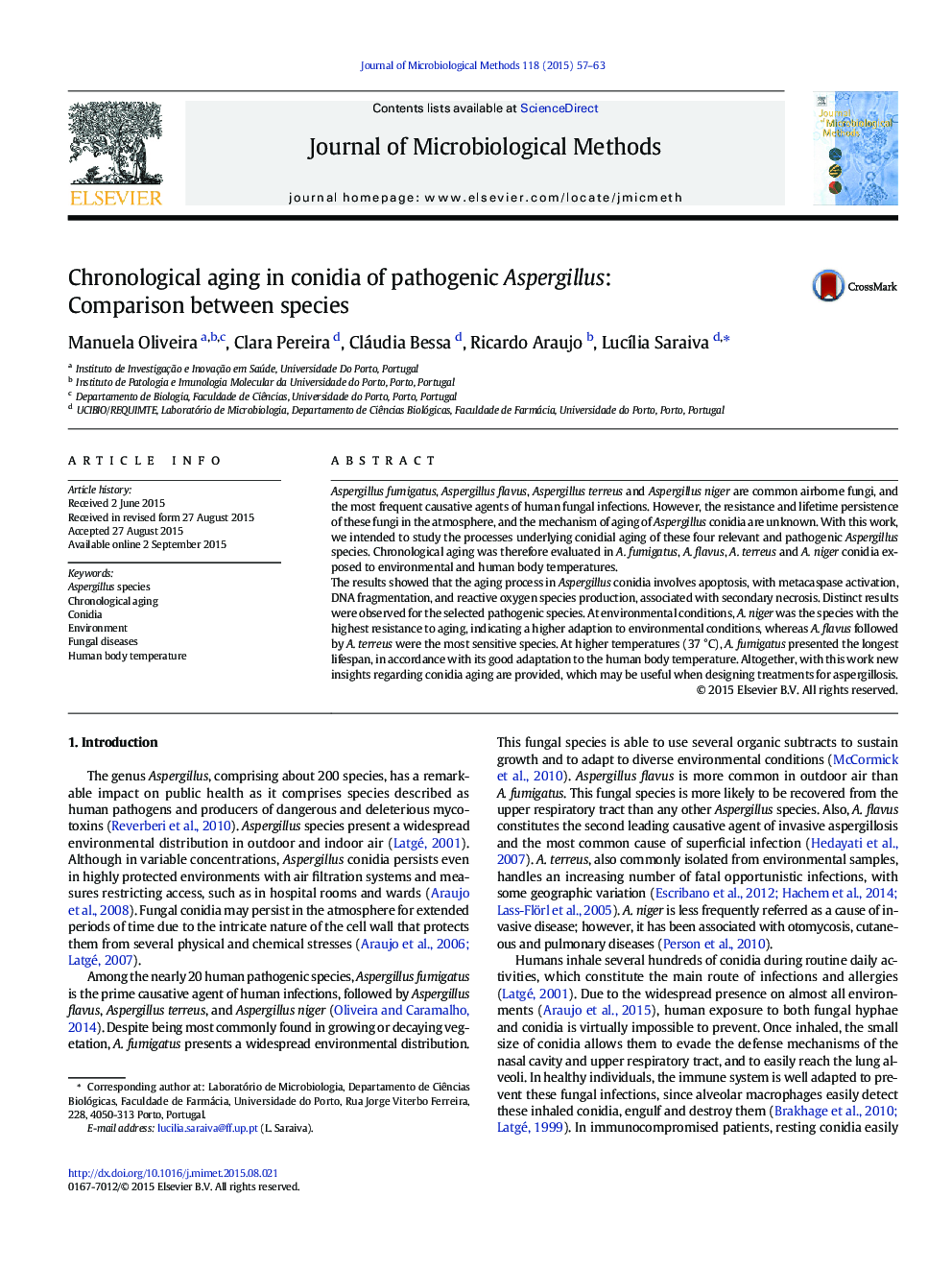| Article ID | Journal | Published Year | Pages | File Type |
|---|---|---|---|---|
| 2089754 | Journal of Microbiological Methods | 2015 | 7 Pages |
•At 25 °C, A. niger presented the highest resistance to aging and A. flavus was the most sensitive.•At 37 °C, A. fumigatus presented the highest resistance to aging and A. flavus was the most sensitive.•Loss in survival was associated with TUNEL for A. flavus and with PI and DHE staining for A. niger.
Aspergillus fumigatus, Aspergillus flavus, Aspergillus terreus and Aspergillus niger are common airborne fungi, and the most frequent causative agents of human fungal infections. However, the resistance and lifetime persistence of these fungi in the atmosphere, and the mechanism of aging of Aspergillus conidia are unknown. With this work, we intended to study the processes underlying conidial aging of these four relevant and pathogenic Aspergillus species. Chronological aging was therefore evaluated in A. fumigatus, A. flavus, A. terreus and A. niger conidia exposed to environmental and human body temperatures.The results showed that the aging process in Aspergillus conidia involves apoptosis, with metacaspase activation, DNA fragmentation, and reactive oxygen species production, associated with secondary necrosis. Distinct results were observed for the selected pathogenic species. At environmental conditions, A. niger was the species with the highest resistance to aging, indicating a higher adaption to environmental conditions, whereas A. flavus followed by A. terreus were the most sensitive species. At higher temperatures (37 °C), A. fumigatus presented the longest lifespan, in accordance with its good adaptation to the human body temperature. Altogether, with this work new insights regarding conidia aging are provided, which may be useful when designing treatments for aspergillosis.
Graphical abstractFigure optionsDownload full-size imageDownload as PowerPoint slide
